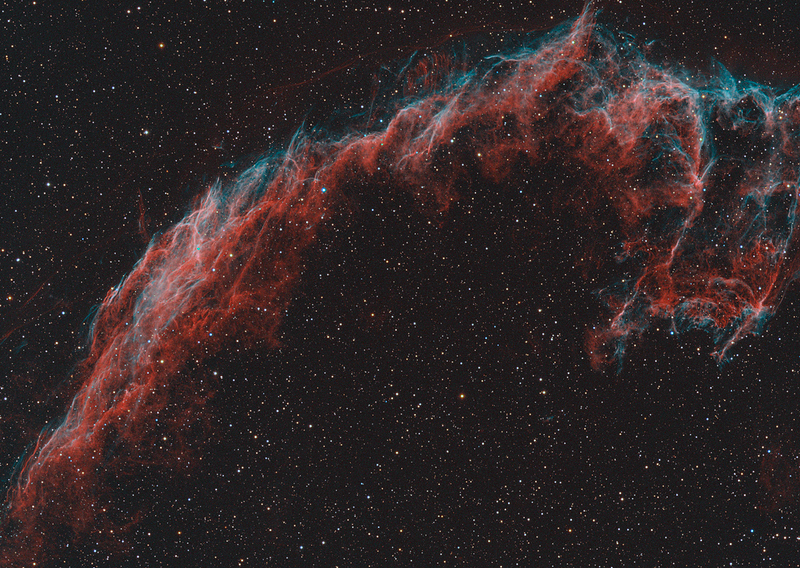Waiting for the cloud to clear, I decided to process some data from the Autumn. This is the first time I have imaged this subject and was amazed at the brightness and definition in OIII and Ha. It was bright enough that it was not necessary to create a starless nebula image for stretching.
That is EXCELLENT Buzz. I know the Ha and OIII really stand, but there’s
still a whole lot of stars in the field and I’m amazed how well you were
able to tightly control the stars.
I didn’t bother with deconvolution - I used masked stretch on the Ha and OIII channels and then extracted the luminance and applied it to a RGB star image. I then combined the two through a star mask. Scope was a WO FLT132 with a field flattener. 20x1200 Ha and 38x1200 OIII in light-polluted Essex.
That is one hell of an image Buzz. The fine filament detail gives it a near 3D effect.
I read somewhere on the Pixinsight forum that you ought not to deconvolute narrowband images as it gives hardly any improvement and could introduce artefacts into the image. I spent 6 months working in Maldon, Essex a couple of years ago. Being on the coast and based away in the country, the views were really good. Alas no imaging equipment, but a good pair of bins.
Steve
Thanks - Steve - I worked in Maldon too during the 90s. There is quite a good dark field site on the coast near the 1st century church there.
I stretched the image with Masked Stretch at first, and some subtle LHE. I then tried out the new Exponential Stretch to enhance the neb before some sharpening to the first four wavelet layers. The star color was developed in a second RGB image, which had the L component of the Nebula applied to it. I then used a star mask over the nebula and copied in the RGB image, effectively changing over the color. I made the star mask from the star image, with the residual layer disabled.
